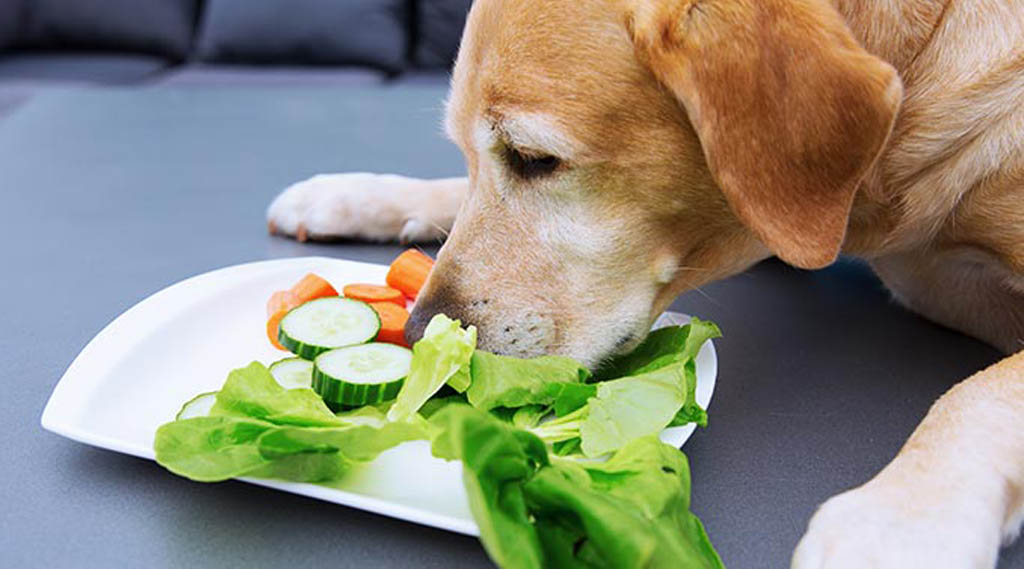Dogs are more than just pets. They are family, but can you imagine, the food you and your family ate every single day, came from a large bag kept in the storeroom. Doesn’t sound very healthy or tasty, right? Wouldn’t it be great if you could feed your dog the same fresh foods you and your family eat? Yes! You can, and that too starting safely with vegetables. While many people believe dogs are complete carnivores and end up feeding them an all-meat diet or processed dog food, dogs are actually omnivores just like us, which means they can eat both, meat and plants. Vegetables are plant products loaded with vitamins, mineral, antioxidants and fiber, and having amazing health benefits for dogs. In fact, there is a wide range of good vegetables for dogs, rich in phytonutrients not found in meat. So, if you’re feeding your dog only meat and carbs, he’s missing out big time.
Just like humans, dogs also require vegetable based nutrition for a balanced diet. Try adding some veggies to your dog’s diet to improve his health and well-being. Here is a list of some particularly good vegetables for dogs.
Table of Contents
1. Beet
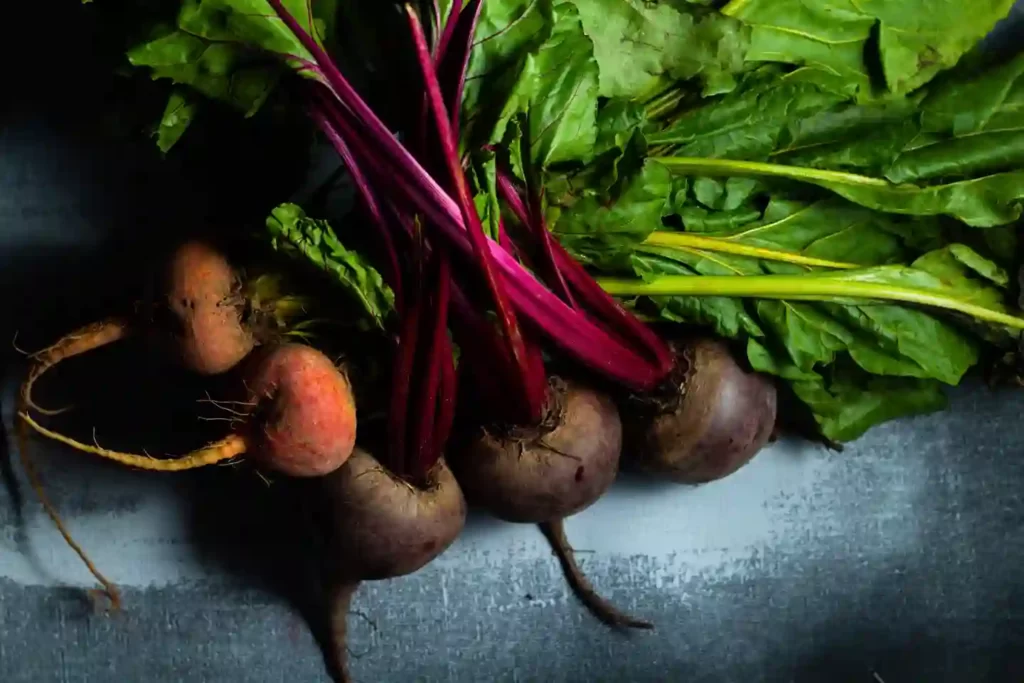
Nutrition
Yes, dogs can eat Beets. It is listed number one in good vegetables for dogs for its unique and clear health benefits. Beet is a wholesome source of vitamin C, fiber, folate, manganese, and potassium.
Benefits
The vitamins and minerals present in Beetroots are good for your dog’s digestion and immune system, and additionally provides a healthy skin and coat.
Serving ideas
Beet can be given in moderate quantities in these forms:
- Blanched and peeled.
- Boiled and mashed.
- Soft-boiled and pureed.
- Chopped and added to a homemade meal that’s balanced with a good source of protein.
- Shredded or grated as a topping to your dog’s dinner or occasional treat.
- For a fancy treat, puree some boiled beets and whip up a batch of delicious Red Velvet Cupcakes for your gorgeous fur-doll.
A word of caution
Usually rare, some dogs can be allergic. Carefully monitor your dog if you decide to feed your dog Beets. Start with a very small amount while introducing it for the first time, and after your dog digests it well, gradually switch to medium portions along with a meal for a balanced diet.
2. Broccoli/Cauliflower
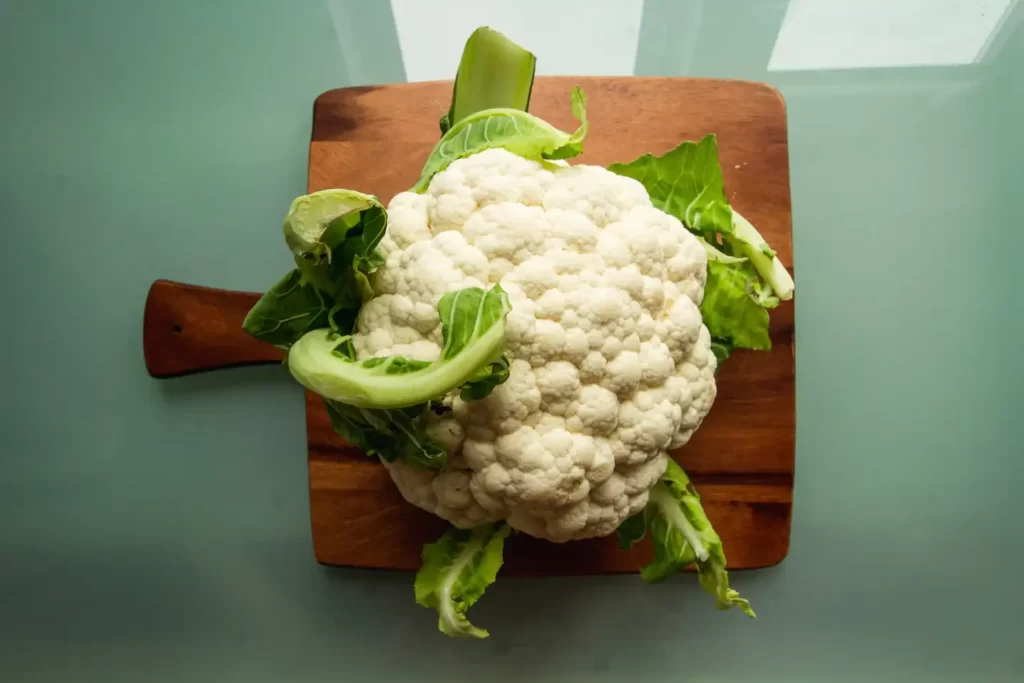
Nutrition
Yes, dogs can eat broccoli and cauliflower occasionally. Broccoli is full of useful vitamins and minerals, including vitamin K, vitamin C, vitamin A, folate, manganese, potassium, fiber and calcium. A relative to Broccoli, Cauliflower is another nutritious and good vegetable for dogs to enjoy. It has all the same valuable nutrients found in Broccoli, plus a conditionally essential nutrient named Choline which improves cognitive behaviors and functions.
Benefits
The variety of nutrients found in Broccoli and Cauliflower help with your dog’s bone density, immunity, heart health, colon health, vision, blood flow, and stave off weight or bowel issues. Additionally, their anti-inflammatory property detoxes the liver and keeps your dog active and happy.
Serving ideas
Raw Broccoli and Cauliflower chunks can be tough on your dog’s teeth and digestive system. So, it is advisable to cook these before feeding them to your dog. Best ways include:
- Steaming the chunks.
- Boiling and pureeing to mix with homemade dog food.
- Processing to form rice-sized pieces for easy chewing and digestion.
A word of caution
These vegetables should never be given in raw state, and must be properly cooked before serving it to your dog. More importantly, these vegetables must be given occasionally and in moderation as they are known to cause bloating and gas, like they do in humans.
3. Butternut Squash/Pumpkin

Nutrition
Yes, dogs can happily eat Butternut Squash and its cousin, Pumpkin. These are particularly rich in vitamin A, vitamin C, vitamin B6, fiber and potassium. Being low in calories and packed with nutrients, these top the list of good vegetables for dogs.
Benefits
Butternut Squash and Pumpkins are naturally sweet which dogs love. The healthy nutrients found in these vegetables help your dog’s immune system, vision, skin and eye health, cardiovascular function, and also maintain electrolyte balance. Furthermore, pureed pumpkin is a popular anecdote for dogs who encounter constipation.
Serving ideas
Due to their thick skin and big seeds, these cucurbits or gourd family vegetables need to be peeled and deseeded before cooking in any of these following ways:
- Bake some chunks and cool before serving it to your dog.
- Puree and add to usual homemade dog food.
- Bake and puree to make health dog treats your pup will love.
A word of caution
Feeding raw Butter Squash or Pumpkin to your dog can cause him indigestion. Make sure you remove the rough parts (seeds and skin) and cook the squash before feeding it to your dog. Besides this, since Butternut Squash and Pumpkin are tough and very high in fiber, their raw form may be hard on your dog’s stomach, causing diarrhea or vomiting. It’s best to light bake these vegetables before giving it to your pup.
4. Carrot
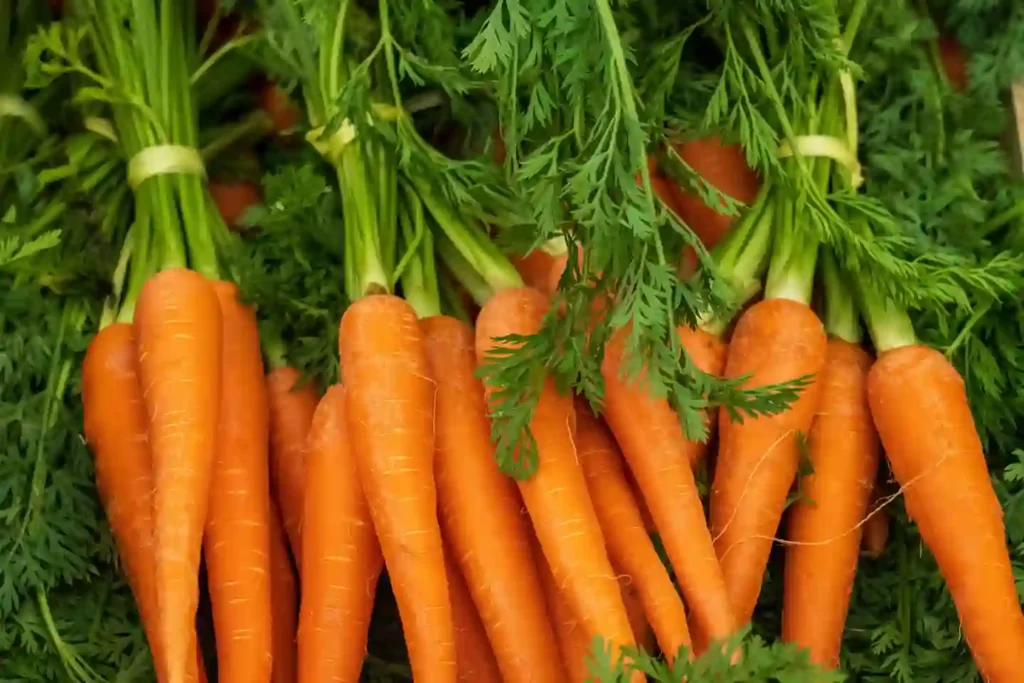
Nutrition
Yes, dogs love to chomp on Carrots just like rabbits. Carrots are one of the best vegetables you can feed your dog. They are loaded with essential vitamins and beneficial elements such as vitamin A, fiber, beta-carotene, antioxidants, potassium, magnesium and calcium.
Benefits
Carrots are excellent low-calorie and low-fat snack for dogs. Feeding your dog raw carrots can support eye, skin, coat, muscle, teeth and bone health, along with regulating immunity and digestion, preventing future illness and urinary problems or constipation. Raw carrots are crunchy, tough and full of fiber which makes them a superb natural toothbrush. Their tough and fibrous structure scrapes the teeth and helps to remove plaque build-up in dogs, satisfying their natural urge to chew.
Serving ideas
- You can easily feed raw carrots to your dog, unlike other vegetables.
- In case your dog is a pup or for some reason has chewing issues in a way, you can give it juiced, cooked, steamed pieces along with his food.
- During hot summers you can give your frozen carrots as cool treats. Carrots are not only nutritious and good vegetables for dogs to enjoy, but they are also incredibly versatile.
A word of caution
If you’re going to give your dog a whole carrot, be sure that it is a size he can manage to chew and won’t possibly choke on. You can consider shredding or grating a portion, especially for smaller dogs. This will help the dog with chewing and digesting this fibrous and delicious veggie.
5. Cucumber

Nutrition
Cucumbers are another super hydrating, juicy and refreshing vegetable that both you and your dog can enjoy as a healthy snack. They are packed with phytonutrients, which provide anti-inflammatory benefits to your dog. Besides, they are also a great source of vitamin A, vitamin B6, vitamin D, vitamin C, vitamin K, potassium and antioxidants.
Benefits
Cucumber is a moisture-dense vegetable with low calories. It is a great source of nutrients that promote strong bones, and are, therefore, good for dogs suffering from arthritis, injuries or other bone conditions. Long term consumption of cucumbers also helps to clean out the bacteria in your dog’s mouth to freshen up his breath.
Serving ideas
- Depending on your dog’s size, cut slices or chop bite-sized pieces.
- You can also puree it and pour over your dog’s dry food.
- Cucumber juice is a great way to make sure your dog stays hydrated.
- Add some cucumber juice in ice-trays, freeze and feed these cubes as cool treats for your fur buddy in hot summers.
A word of caution
Unlike the other good vegetables for dogs, cucumbers can be enjoyed quite often. The only concern you can encounter in your dog is loose stools and more frequent urination. More importantly, some people might think if dogs can eat cucumbers, they can be fed pickles too. This is incorrect. Pickled cucumbers contain vinegar, salt, spices, etc., which are harmful for your dog and can cause severe issues in his gut and stomach.
Also read – Homemade Dog Treats Recipes That will Make Dogs Happy
6. Green Beans
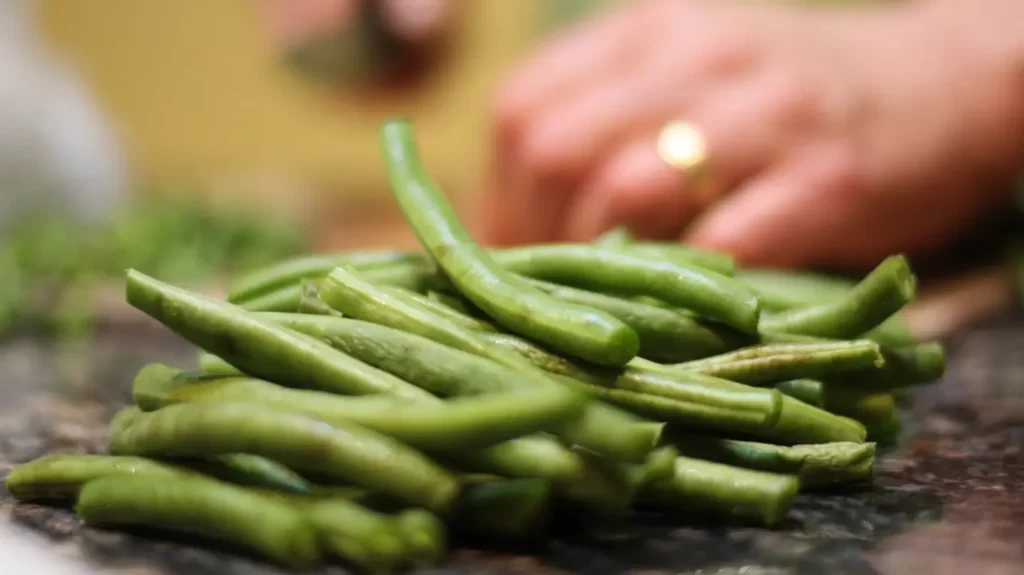
Nutrition
Green beans are loaded with important vitamins and minerals, such as iron, calcium, and vitamins B6, vitamin A, vitamin C, and vitamin K. Green beans are also low-calorie and rich in protein and fiber, which can help dogs feel full.
Benefits
Green beans are an excellent source of key vitamins and minerals that promote and support the immune system, reproduction, healthy vision, metabolism, bone health and wound healing.
Serving ideas
Dogs can enjoy green beans cooked in a variety of ways, like:
- Raw, blanched, steamed, baked, or pureed.
- Remember to balance feed your dog green beans alongside healthy meats and carbs.
A word of caution
Only plain, unseasoned green beans prove to be a healthy addition to supplement your dog’s diet. One thing we must always remember: each dog reacts differently to different kinds of food. Moderation is the golden rule to avoid gas, bloating, indigestion or diarrhea. If you choose to feed your dog green beans, a larger dog will safely enjoy more in its diet compared to a smaller dog.
7. Kale
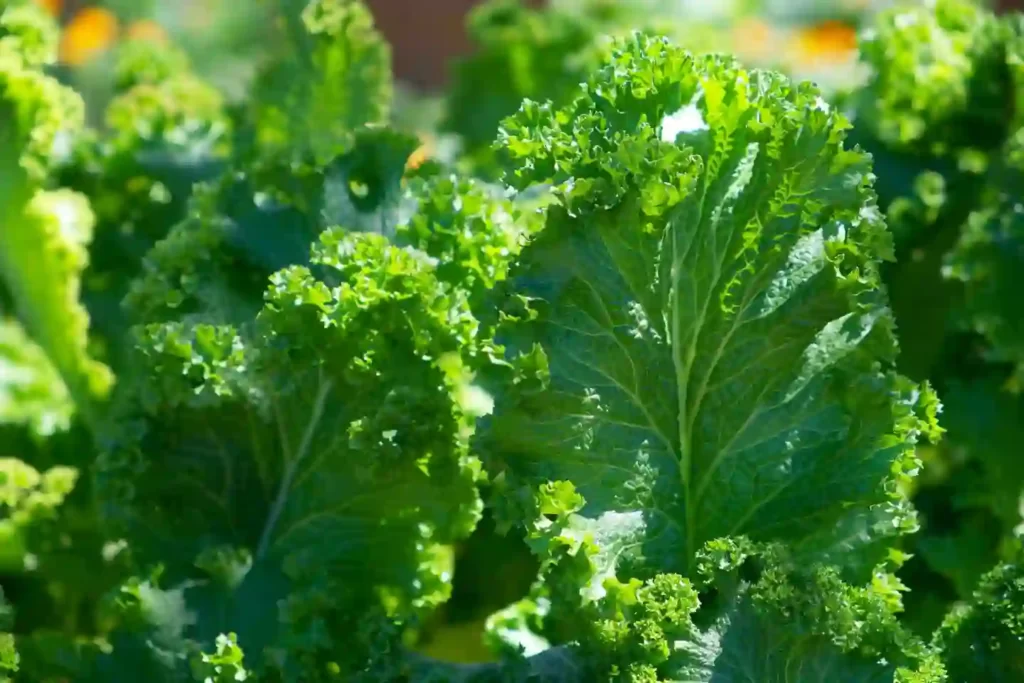
Nutrition
Kale is a popular superfood belonging to the cabbage family. It is among the most nutrient-dense foods available on this planet. A single cup of green curly leaves kale contains:
[DV: Daily Value]
- Vitamin A: 206% of the DV (from beta-carotene)
- Vitamin K: 684% of the DV
- Vitamin C: 134% of the DV
- Vitamin B6: 9% of the DV
- Manganese: 26% of the DV
- Calcium: 9% of the DV
- Copper: 10% of the DV
- Potassium: 9% of the DV
- Magnesium: 6% of the DV
- Vitamin B1 (thiamin), vitamin B2 (riboflavin), vitamin B3 (niacin), iron and phosphorus: 3% or more of DV
Benefits
- Kale is an excellent source of two main antioxidants (lutein and zeaxanthin) which can protect against cancer.
- Green leafy kales are also rich in calcium, magnesium, potassium and iron, which support healthy bones, and a healthy heart.
- As it is chock-full of vitamins, feeding your dog kale can support vision and colon health, liver detoxification, and keep infections at bay.
Serving ideas
- Since kale is a dense leafy vegetable, washing thoroughly to remove pesticides is recommended.
- You can feed your dog blanched, steamed or raw kale suiting his likings.
- Kale must be served in moderation along with a source of protein to provide a balanced diet for your dog.
A word of caution
Avoid using additives like salt, oil or spices to kale, which is applicable to all other vegetables.
8. Peas
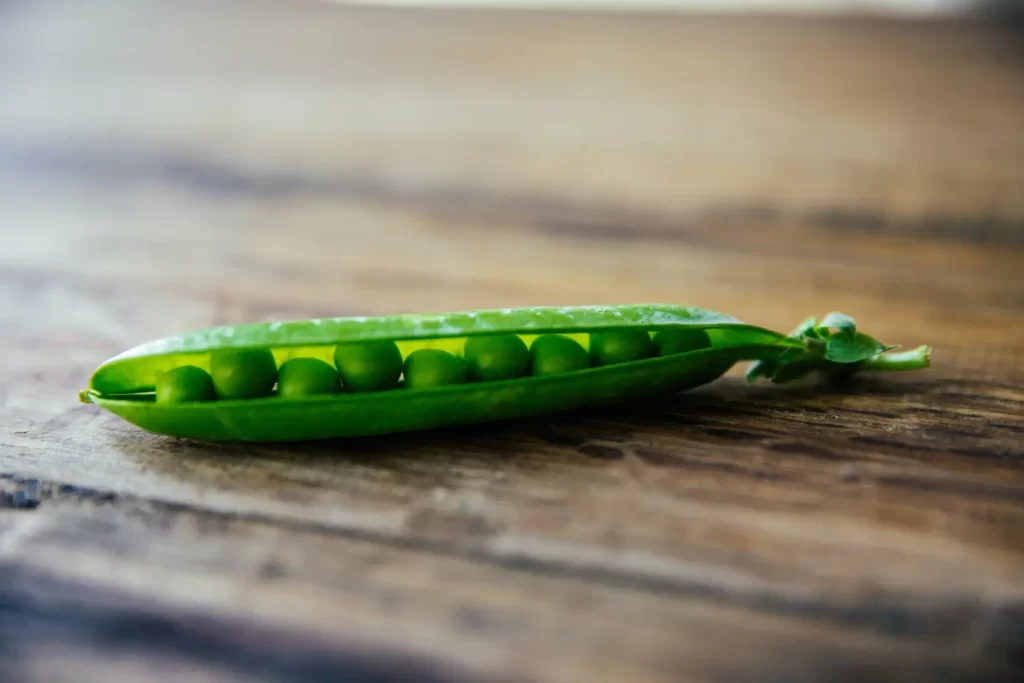
Nutrition
Peas are a good source of vitamin A, vitamin K, and the B vitamins. They are full of minerals like iron, zinc, potassium, and magnesium. They contain an obvious amount of protein and fiber.
Benefits
Peas contain lutein, an anti-oxidant good for your dog’s skin, heart, and eye health.
Serving ideas
- Fresh green peas, of course, must always be shelled.
- Best way to cook peas for dogs is by boiling or steaming. You can then smash or puree it, and add it to your dog’s meal.
- You can also give your dog frozen, or thawed peas, along with his dietary meal.
A word of caution
Avoid canned peas, since, like many canned vegetables, canned peas typically have a lot of added sodium, which is harmful to both, dogs and humans. Also, for a fact, like with any human food, peas can have limitations. Avoid giving peas to dogs that have kidney conditions, like kidney stones. Also, be careful with pea pods, because they can get stuck in your dog’s throat and cause choking. And as with any new food, watch for counter reactions, such as diarrhoea or vomiting.
9. Potatoes
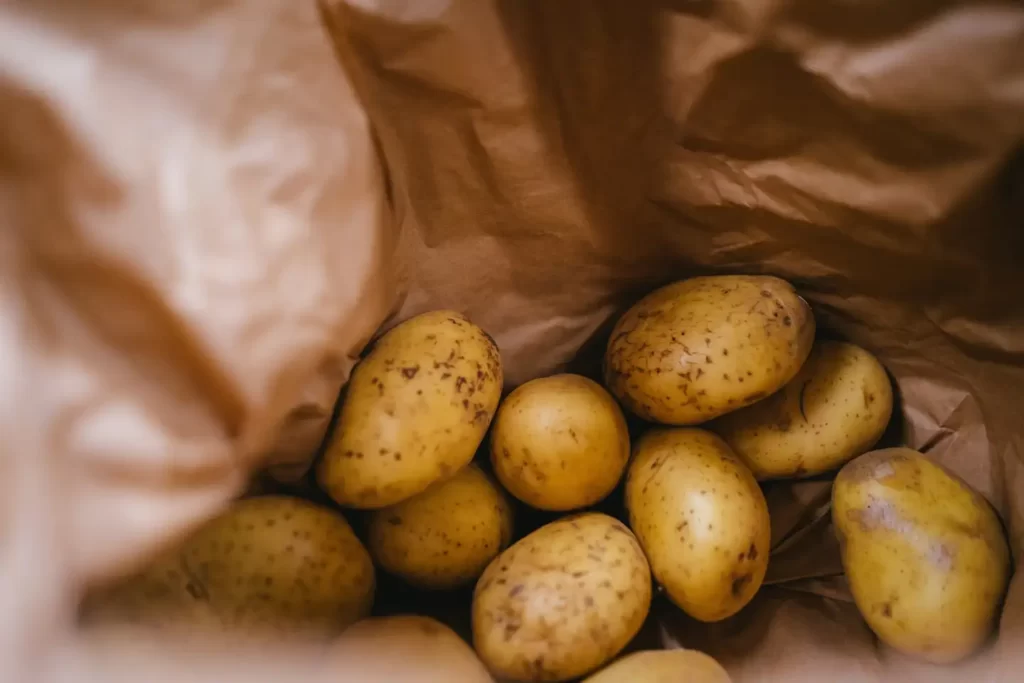
Nutrition
Potatoes are great for your dog’s digestive health because they’re high in fiber and contain vitamin B6, vitamin B3, and copper, plus they are rich in the antioxidant beta-carotene.
Benefits
Because of their high fiber content, potatoes are great for your dog’s digestive health. The copper in potatoes helps builds collagen and iron absorption, supports bone, skin and coat health, and works as an antioxidant.
Serving ideas
- Wash thoroughly and keep the skin, they are the healthiest part of a potato.
- Cut in bite-sized pieces.
- Always bake or boil the potatoes before feeding it to your dog. This step is very important as raw potatoes can contain a toxic chemical called solanine, which can harm your dog.
A word of caution
Warning! Do not feed your dog potatoes the way you typically like to enjoy it. Fried, sautéed and seasoned potatoes can cause severe health issues in your dog. Avoid feeding your dog french fries, fried wedges, or potato chips. Additionally, potatoes have a high sugar content, so keep the portions limited for your dog, and totally avoid giving these to dogs that are diabetic.
10. Spinach

Nutrition
“I’m strong to the finish, cause I eats me Spinach. I’m Popeye the sailor-man. Toot! Toot!”
Well, Popeye already vouched for the incredibly nutrient-dense Spinach decades ago. Indeed, it is good for your dog as it is for you. Spinach contains potassium, magnesium, and vitamins B6, vitamin B9 and vitamin E. It is also rich in carotenoids, vitamin C, vitamin K, folic acid, iron and calcium.
Benefits
This nutritional power-house vegetable, when served to your dog occasionally, can help fend off cancer, inflammatory and cardiovascular issues. Spinach also has the potential to raise energy levels and immunity in your dog.
Serving ideas
- You can steam, blanch or puree little spinach to make it easier for your dog to digest.
- Your dog may not like the taste, so try serving it with meat or other vegetables he already enjoys.
A word of caution
While introducing Spinach as a part of your dog’s meals, be mindful that dogs have different digestive systems than humans do, so dogs can’t eat things prepared in a way that we would. And, just as true with any new food: introduce it slowly.
RESEARCH PROVES DOGS NEED VEGETABLES
Studies have proved that, dogs who ate a rainbow of vegetables thrice a week or more, had a 90% decrease in cancer risk. It would be unwise to replace vegetable nutrients with supplements. Now, since you are aware of the good vegetables for dogs, you can create a well-balanced homemade diet for your dog. Be sure, with any new addition to your dog’s diet, it’s up to you to make the choice, and follow these rules of thumb:
- Buy fresh, and possibly, organic vegetables.
- Use no seasoning at all.
- For fussy eaters or first timers, try feeding the vegetable with meat and other dog-friendly vegetables that you know your pup enjoys.
- Gradually and patiently introduce the new vegetable to your dog.
- Serve occasionally, and to avoid adverse effects, limit the servings to small portions once or twice per week.
Share this very informative and important article with all the dog parents out there.

